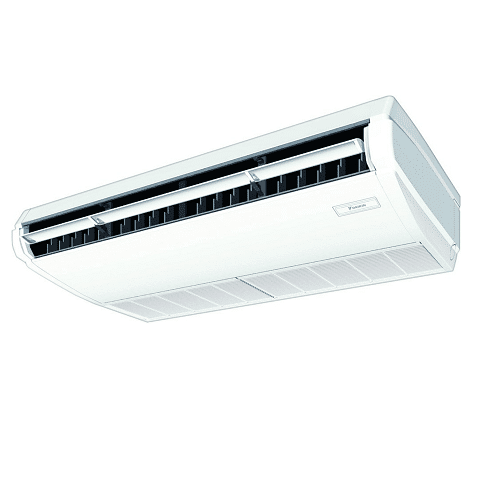Ceiling Mounted Air Conditioning
Elevating Comfort: Our Guide to Ceiling-Mounted Air Conditioning
In our journey to create truly comfortable and aesthetically pleasing indoor environments, the evolution of air conditioning has been nothing short of remarkable. Gone are the days when noisy, bulky window units or conspicuous wall-mounted systems were our only options. Today, we’re increasingly turning our attention upwards, to a solution that blends seamlessly with our living and working spaces while delivering superior climate control: ceiling-mounted air conditioning.
As experts in creating optimal indoor climates, we’ve seen firsthand how these systems transform homes and businesses. They represent a sophisticated approach to cooling and heating, prioritizing both powerful performance and discreet integration. Join us as we explore the world of ceiling-mounted AC, understanding why it’s often our preferred choice for discerning clients.
What Exactly Are Ceiling-Mounted AC Units?
When we talk about ceiling-mounted air conditioning, we’re referring to a category of HVAC systems where the indoor unit (or a significant part of it) is installed within or suspended from the ceiling. Unlike traditional wall-mounted split systems or window units, these designs are engineered to be less intrusive, often becoming virtually invisible once installed.

Our Top Choices: Types of Ceiling-Mounted AC Units
The term “ceiling-mounted” isn’t a one-size-fits-all description. We typically categorize them into three main types, each with its own set of characteristics and ideal applications:
1. Ceiling Cassette Units
- What they are: These are perhaps the most recognizable form of ceiling-mounted AC. They are typically square or rectangular units designed to fit flush into a suspended (false) ceiling, leaving only a decorative grille visible.
- How they work: Cassette units are renowned for their multi-directional airflow, often featuring two-way or four-way discharge panels. This design allows them to distribute air evenly across the entire room, eliminating hot or cold spots.
- Where we recommend them: We find cassette units ideal for open-plan offices, retail spaces, restaurants, larger living rooms, and bedrooms where a suspended ceiling is present or can be installed. Their unobtrusive appearance and powerful, uniform cooling make them a popular choice.
2. Concealed Ducted Units (Central AC)
- What they are: This type represents the ultimate in discreet air conditioning. The main indoor unit is completely hidden within the ceiling void, attic, or an adjacent utility space. Conditioned air is then distributed throughout the building via a network of ductwork to various rooms, exiting through subtle grilles or diffusers.
- How they work: Unlike cassette units, ducted systems centrally cool or heat the entire space or multiple zones. They can be integrated with sophisticated zoning controls, allowing us to set different temperatures for different areas of your property.
- Where we recommend them: For new builds, major renovations, or properties where a truly integrated, invisible climate control system is desired, ducted units are our go-to. They are perfect for whole-house solutions, offering unparalleled aesthetic purity and consistent comfort across multiple rooms.
3. Ceiling Suspended Units (Under-Ceiling or Console)
- What they are: Also known as under-ceiling or console units, these are designed to be explicitly visible, hanging directly below the ceiling, rather than fitting into it. While not as hidden as cassettes or ducted systems, they are still above eye level and free up valuable wall and floor space.
- How they work: Suspended units are typically powerful, designed for larger, open spaces with high ceilings where installing a false ceiling or extensive ductwork isn’t feasible. They often have a wide, powerful airflow to cover large areas effectively.
- Where we recommend them: You’ll often see these in large commercial settings like warehouses, workshops, server rooms, and certain retail environments or even older buildings with high ceilings where structural changes are limited. They offer a potent cooling solution without requiring complex ceiling modifications.
Why We Advocate for Ceiling-Mounted AC: Our Top Reasons
Our experience has consistently shown that ceiling-mounted air conditioning offers a compelling array of benefits:
- Unmatched Aesthetic Appeal & Space Saving: This is perhaps the most significant advantage for many of our clients. By moving the unit off the wall and into the ceiling, we free up precious wall space for decor, furniture, or artwork. For ducted systems, the units are entirely invisible, preserving the architectural integrity of your design.
- Imagine a living room with no visible AC units, just subtle grilles blending into the ceiling – a truly clean and uncluttered look.
- Superior Air Distribution and Uniform Comfort: Especially with multi-directional cassette units and well-designed ducted systems, the placement in the ceiling allows for far more even air distribution. Conditioned air can disperse naturally downwards and outwards, minimizing drafts and ensuring consistent temperatures throughout the entire room or multiple zones. We can avoid those annoying hot and cold spots that often plague less sophisticated systems.
- Quiet Operation: We understand that peace and quiet are paramount. With ceiling-mounted units, the noisier components (like the compressor) are typically located outdoors. The indoor units themselves are engineered for whisper-quiet operation, ensuring your comfort isn’t disturbed by distracting hums or fan noise.
- Energy Efficiency & Cost Savings: Modern ceiling-mounted systems, particularly those integrated with inverter technology and Variable Refrigerant Flow (VRF) or Variable Refrigerant Volume (VRV) systems, are incredibly energy efficient. They can precisely match their output to the cooling or heating demand, leading to significant long-term energy savings and a reduced carbon footprint.
- Enhanced Property Value: Investing in a high-quality, discreet, and efficient ceiling-mounted AC system is often seen as a premium feature that enhances the aesthetic and functional value of your property, making it more appealing to potential buyers or tenants.
- Versatility for Diverse Applications: From a minimalist modern home to a bustling commercial space, there’s a ceiling-mounted solution to fit almost any environment. Their adaptable design allows for custom solutions that cater to specific cooling loads and architectural constraints.
Considerations Before Installation: What We Look For
While the benefits are clear, we always emphasize the importance of careful planning and professional installation for ceiling-mounted AC systems. Here are key factors we assess:
- Ceiling Type and Void Space: For cassette and ducted units, sufficient void space above the existing ceiling is crucial. We check for joist locations, wiring, and plumbing to ensure seamless integration.
- Ductwork Requirements (for ducted units): Planning for the precise routing of ductwork is essential for efficient airflow and minimal visual impact.
- Drainage for Condensate: All AC units produce condensate (water). We must ensure there’s a clear path for drainage, either via gravity or a condensate pump, to prevent water damage.
- Electrical Requirements: Dedicated electrical circuits are often necessary to power these units safely and efficiently.
- Maintenance Access: While hidden, the units will require periodic maintenance. We ensure that accessible panels or hatches are planned for easy servicing.
- Professional Installation: This is non-negotiable. Ceiling-mounted systems are complex and require specialized knowledge for optimal performance, efficiency, and longevity. We always emphasize engaging certified HVAC professionals.
Maintenance and Longevity
Like any sophisticated appliance, ceiling-mounted AC units benefit from regular maintenance. We generally recommend:
- Filter Cleaning/Replacement: Regularly cleaning or replacing air filters (every 1-3 months, depending on usage) is vital for air quality, efficiency, and system longevity.
- Professional Servicing: Annual or bi-annual professional check-ups ensure refrigerant levels are optimal, coils are clean, and all components are functioning correctly. This proactive approach prevents costly breakdowns and maintains efficiency.
- Clear Drain Pans: Ensuring the condensate drain pan and line are clear prevents overflows and potential water damage.
With proper installation and routine maintenance, we expect ceiling-mounted AC systems to provide reliable, comfortable climate control for 15-20 years or even longer. For Wall mounted units please click here.
The Power of Visuals: Adding Photos
While we can only describe the beauty and functionality of these systems in words, imagine how much clearer our explanations would be with accompanying photographs! When considering a ceiling-mounted AC solution, we always encourage clients to look at visual examples. Photos can beautifully illustrate:
- The discreet integration of a four-way cassette unit into a modern office ceiling.
- The barely visible grilles of a ducted system in a residential living room.
- A ceiling-suspended unit efficiently cooling a large commercial space.
- Before-and-after shots showcasing the transformation of a cluttered room into an open, aesthetically pleasing environment thanks to hidden AC.
These visual aids are invaluable in helping you envision how effortlessly ceiling-mounted air conditioning can enhance your own space. For us, ceiling-mounted air conditioning represents the pinnacle of modern climate control. It’s a solution that perfectly balances powerful, efficient performance with an unwavering commitment to aesthetics and space optimization. Whether you’re seeking to create a serene, uncluttered home environment or ensure uniform comfort across a bustling commercial space, these systems offer a discreet yet commanding presence. By investing in ceiling-mounted AC, we believe you’re not just buying an appliance; you’re investing in a superior level of comfort, efficiency, and timeless design that elevates your entire indoor experience.
Frequently Asked Questions (FAQs) about Ceiling-Mounted Air Conditioning
Q1: Are ceiling-mounted AC units more expensive than wall-mounted units? A1: Generally, yes, the initial installation cost for ceiling-mounted units (especially ducted systems) can be higher than for basic wall-mounted split systems. This is due to the complexity of installation, potential need for false ceilings, and the ductwork involved. However, their long-term benefits in terms of efficiency, aesthetics, and uniform comfort often justify the investment.
Q2: How noisy are ceiling cassette or ducted units? A2: One of the primary advantages of ceiling-mounted units is their exceptionally quiet operation. Since the compressor unit is typically located outdoors, the indoor units are designed for whisper-quiet performance. Ducted systems are often the quietest, as the main air handler is hidden away, and only the gentle airflow from the grilles is heard.
Q3: Can ceiling AC units be installed in any ceiling? A3: For cassette and concealed ducted units, there generally needs to be sufficient void space above the existing ceiling to accommodate the unit and any necessary ductwork. For concrete slabs without a false ceiling, installation can be more challenging and might require specific planning or solutions like ceiling-suspended units. It’s crucial to have a professional assessment of your ceiling structure.
Q4: Do ceiling-mounted AC units require special maintenance? A4: While the core maintenance is similar to other AC types (regular filter cleaning, professional service checks), access for maintenance needs to be planned during installation. For cassette units, filter access is usually via the visible grille. For ducted units, access panels will be strategically placed. Neglecting maintenance can lead to reduced efficiency and a shorter lifespan.
Q5: Are ceiling-mounted units more energy efficient? A5: Modern ceiling-mounted units, especially those with inverter technology, VRF/VRV systems, and multi-zone capabilities, are very energy efficient. Their ability to deliver even cooling and heating, combined with precise control, often results in lower energy consumption compared to less advanced systems that might run at full capacity unnecessarily or create hot/cold spots.
Q6: What’s the best type of ceiling AC for a typical home? A6: For most residential applications, we often recommend either ceiling cassette units (if you have or plan for a false ceiling) for open areas or, ideally, concealed ducted systems for a whole-house, invisible solution. Ducted systems offer the ultimate in comfort and aesthetics for new builds or major renovations, allowing for precise temperature control in different zones.


